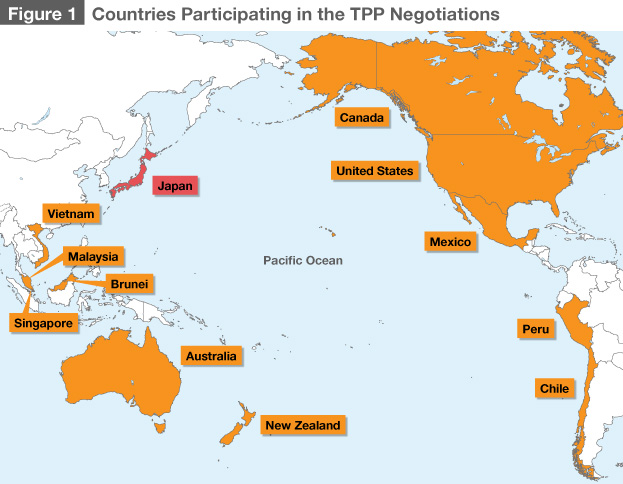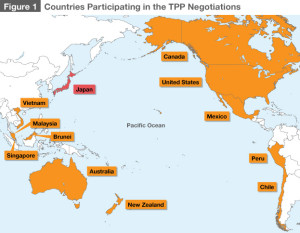TPP Should Matter to the 99 Percent
For the past ten years, a trade deal has been in the works that very little of our population knows about. This trade deal is known as the Trans-Pacific Partnership (TPP).
The TPP is the largest trade deal so far in U.S. history and, if it is passed, will affect 40 percent of global trade. It will increase exports between twelve countries such as the United States, Chile, Japan, Mexico, and Australia. It will override past trade deals such as the North America Free Trade Agreement (NAFTA), which in 1984 when it was first signed, caused some controversy itself. A similar agreement to the TPP, entitled the Transatlantic Trade and Investment Partnership (TTIP), is also in discussion, involving solely the U.S. and European Union (EU).
The TPP agreement will eliminate many of the barriers for trade, such as different taxes, but it will also put up some new barriers that favor larger corporations. A YouTube video from the MoveOn.org: Democracy in Action’s channel featuring Robert Reich, Senior Fellow at the Blum Center for Developing Economies, for example, explains how pharmaceutical companies will get stronger patents for their brands so that a lot of off-name brands will be taken off the market due to their similarity. This, in turn, would increase the cost of medicines due to the fact that larger corporate brands would have the upper hand. The video can be found here.
All countries involved, however, are expected to meet certain standards, including environmental and labor standards. There is much debate over the job impact it will leave; those not in favor of the agreement point out that it will leave many people jobless if it becomes too corporate, while those in favor say that this may happen, but in the long run, it will provide even more jobs as the agreement is put into action.
There is also concern that this will bring manufactured goods into question, due to the fact that many of the products will no longer be made in the U.S., but instead imported in from other countries.
The TPP is expected to increase economic output by more than 100 million dollars a year, but the problem with this is that a lot of it is expected to go to those involved with the bigger corporations, as opposed to spreading finances evenly in the economy. So many smaller businesses will be at a loss
According to independent news source The Daily Conversation, one of the main goals of this agreement is to off-set China’s economic power in the world, by having the U.S. join with other countries to make this happen. While the current number of countries involved is estimated at 12, more are expected to join as more legislators in each country approve of the deal.
Very few news outlets have reported on the new agreement due to the fact that many of them are associated with the corporations involved, so they cannot say much on the subject without barking up the wrong tree. And for those who have reported on it, the response is mostly positive, due to the fact that they are influenced to support it, as opposed to pointing out the negatives to the agreement.
One thing is for sure: more people should be aware of the agreement. It will impact everyone one way or another.
To read and find out more on the TPP, go to the United States Trade Representative’s website.


